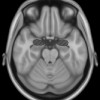Archive for February, 2011

The Firing of Developing Neurons
Feb 18th
At the University of Connecticut Health Center, researchers are now studying the development of neurons and their young firing patterns. It has been discovered that the neurons of fetuses as young as 20 to 21 weeks old fire in patterns that can be seen into adulthood. This is a glimpse into young nerve cells and can serve a basis to understanding what happens when brain development goes wrong.
The neurons fire pulses with periods of rest in between. This is commonly seen in sleeping adults. These pulses were seen between neurons located in the cerebral cortex. The cerebral cortex is involved More >

Cancer Genomics: so many mutations!
Feb 18th
The human genome is the complete collection of over three billion bases in each of our cells. Cancers accumulate multiple changes, or mutations, in their DNA that contribute to the disease by changing how cells behave. For instance, cancers need nutrients to grow. Very often, they get these nutrients by producing signals that encourage new blood vessel formation. Finding the mutations that lead to cancer is very difficult. For one thing, even for cancers that affect the same tissue and look similar, the mutations can be very different. Also, one of the hallmarks of cancer is an increased rate of More >

Frenemies?
Feb 4th
In Nature Neuroscience this February, Bickart et.al. demonstrate a correlation between the number of friends you have and the size of your amygdala . Specifically, they showed that the volume of the amygdala is positively correlated with the size and complexity of a person’s social network.
As stated on the G2C website, the amygdala is involved in processing emotions, and fear–learning. Concerning the amygdala and fear, the flight-or-flight response is one of the most well known examples. So do people with more “frenemies” have larger amygdalae to help them survive inevitable back stabbing?
According to this paper, while there was a correlation between large More >
